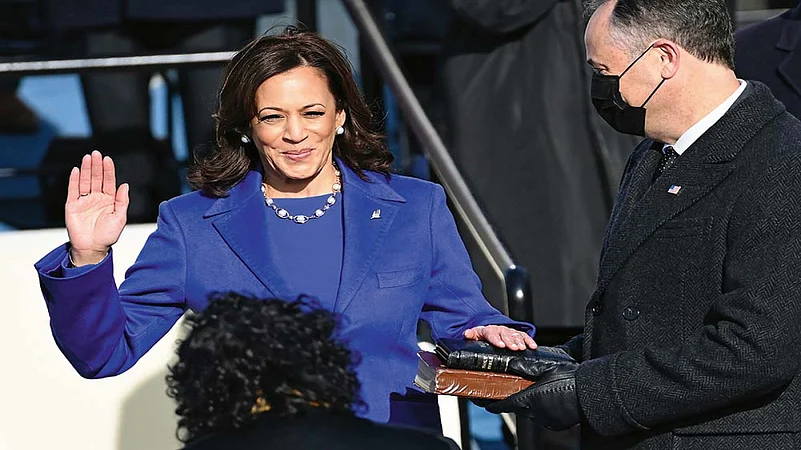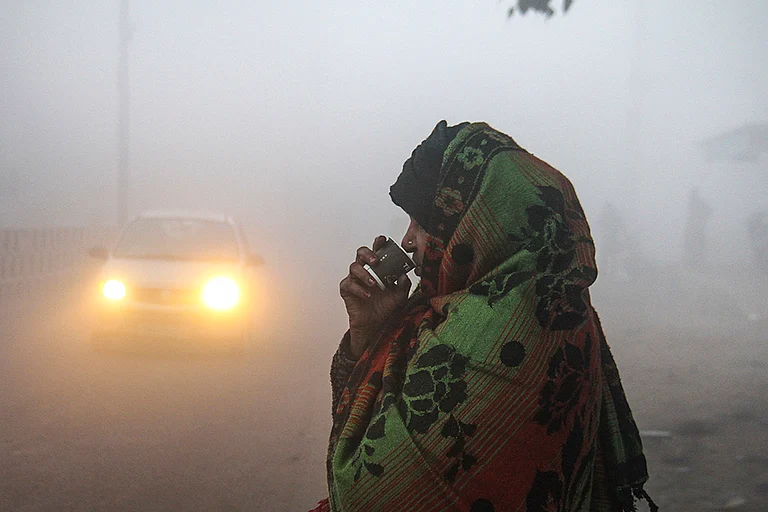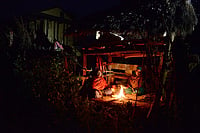In a conversation done for Outlook, writer Peggy Mohan and I, along with Sunil Menon, had reflected on the hidden persistence of indigenous women’s culture and language, after a region had been overrun by male settlers. Women, we said, only part-metaphorically, are almost like a separate race. An India/Caribbean passage was strung like a meta-theme there. With Shyamala Gopalan Harris, mother of the recently elected US Vice President, we revisit that same site of crossing. When free to reinvent oneself, away from the constructed hierarchies and suppressions in your place of birth, what are the possibilities for women? As a woman unfettered by restrictions in a distant continent, Shyamala made some very significant choices, helping her daughter break barriers. Kamala Harris’s biography is a testament to this story.
It’s not often that one sees values nurtured by single mothers lived out by their daughters in public life. True, strong women have often raised leader sons. But many women leaders we know—Indira Gandhi, Margaret Thatcher, Queen Elizabeth I—are most often seen as heirs to their fathers; there aren’t many examples of leader women raised by strong women. This was what kept crossing my mind as I read Harris’s autobiography: The Truths We Hold: An American Journey. The other thought was trying to connect the strict taboo-ridden life I associated with traditional ’50s Tamil Brahmins with the this-worldliness, the can-do optimism of the US.
The answer to both riddles was in the mother’s remarkable journey. Shyamala, who immigrated from India (Madras-born, all-India raised), is the central motive force in the book, the person who inspired her daughter most. Unlike her more sheltered cohorts in India, she found herself in Berkeley, away from the structures and strictures of middle-class Indian life. Berkeley in the early ’60s was a crucible of social protest movements. This unlikely figure—5 ft tall, with a long braid of hair, and apparently a decisive, outspoken, vibrant personality—was making her own history, quite unprecedented for women from her background.
Picture the life of a typical middle-class Indian girl of the era, inspected for marriage based on beauty, skin colour and father’s status; later perhaps, an efficient homemaker. And picture Shyamala, working devotedly long hours in a cancer lab, while her children were cared for by the African-American working community of neighbours in Oakland, California; accompanying, sari-clad, her Jamaican husband to visit his country; welcoming her daughters into a warm home after school, fragrant with fresh-cut flowers and redolent with fresh-baked cookies. As a single mother later, she played games with them, lived in a rented flat for years, and though probably raised in a strict vegetarian home, cooked her daughters beef stew and okra gumbo along with vendekkai curry. But most importantly, she consciously chose Black America as the face of the US she wanted to raise her part-Afro-Caribbean daughters in.
The picture Kamala Harris paints is of a household and neighbourhood powered by female efficiency, solidarity and Black pride. ‘Shyamala and the girls’ spent their evenings in the Black community centre, listening to inspiring Black voices like Richard Wright. It’s a heady mix that has a lot to do with Kamala’s seamless adaptation to US life--it’s clear that Shyamala chose a distinctly different path from the ordinary. She raised her daughters to become proud Black Americans. Theirs was not the lonely mainstream suburban life many immigrants chose, surrounded by two-car garages and creature comforts.
However, she instilled values that were very familiar to me, having grown up in ’60s India. Most Indian mothers then were trained, like Shyamala, for a tough world. They were expected to be efficient, strict, disciplined. And they were to raise their daughters the same way, to face a tough and transitioning world. But these ’60s mothers of the Indian middle-class could only go so far. They trod on the trail set by men. I have seen glimpses of such strength in the mothers I grew up around, without the power to carry forward publicly one’s own values of egalitarianism, independence and obliviousness to what society will think. Not so Shyamala Harris, who was given, by progressive parents, the unique opportunity to forge her own destiny. She transmitted that opportunity to her daughters.
A single parent, heading a family of women of not only two young daughters but soon also a granddaughter, would have been an anomaly to most South Asians at the time. In sending her daughters to a Baptist Church and the diet she cooked, Shyamala raised them in the culture of their father and that of Black America. Diet and religion are two ways children of immigrant mothers often feel left out. Equally, mothers might feel diet and religion are the habits of the home culture they must impart, for stability in these unfamiliar conditions. The path Shyamala Harris took led to her daughter’s greater assimilation, and led her to the high political position she now holds. The key ingredients: the combination of freedom to choose and live the life one wants, free of taboos and restrictions, but live it with adventure, hard work, discipline and dedication to help others.
For, beyond matters of diet, deeper values were conveyed. Scattered through this book are the values handed down from the mother, directives that almost amount to commandments. They are evoked often as Kamala recounts her public life: Don’t let anybody tell you who you are. You tell them who you are. Don’t complain that things are wrong, do something. Never be idle: even while watching TV, your hands should be busy with crochet, knitting, anything. Work hard. When you face challenges, what matters is how well you run the part of the race that’s yours. Focus on what’s in front of you. Fight for your values. Help others.
She tracks her own brilliant public career, the result of hard work, dedication and political acuity, as district attorney, as attorney general, as Senator, all for California, in swift, sure strokes. Her remarkable mother is the radiating point of key nodes of her public life. If working for single mothers in healthcare or other rights, she mentions her mother’s solicitude for their babysitter, without whom her lab work would not get done. The experiential world of the small, insignificant person seems to motivate her public career. How does a young adult feel during abuse? How does a father regard his child’s truancy? When dealing with the brutal separation of children from parents in the Central America immigrant crisis, she remembers how important to a child the comfort offered by a parent is via her own warm, mother-headed household. In dealing with street crime, she keeps at the fore a witness’s tough situation as a mother. In her ‘Back on Track’ programme to help young adults avoid prison, getting them to do their General Equivalency Diploma, thus saving money for the state, we see the nurturing imperative. During the ‘foreclosure crisis’, she recalls her mother’s precarious position as a renter. Her public health battles are punctuated by her mother’s cancer treatment. In all of these, her fighting spirit is evident: at one point, she demands pro bono work from top lawyers for a good cause.
Her dealing with elementary school truancy, rounding up parents and giving them support, with compassion and firmness, especially caught my attention. It had attracted criticism from minorities, who felt she “went after them” as a strict disciplinarian. People thought she wanted to catch and lock up parents who ignored truancy. But to me, it seems exactly what a ’50s/’60s Indian middle-class mother would have done.
A mother’s gift to a daughter has historically been conveyed in terms of lessons of domesticity. In this story we see a different gift: a mother’s down-to-earth example that inspires a universal political competence.
























